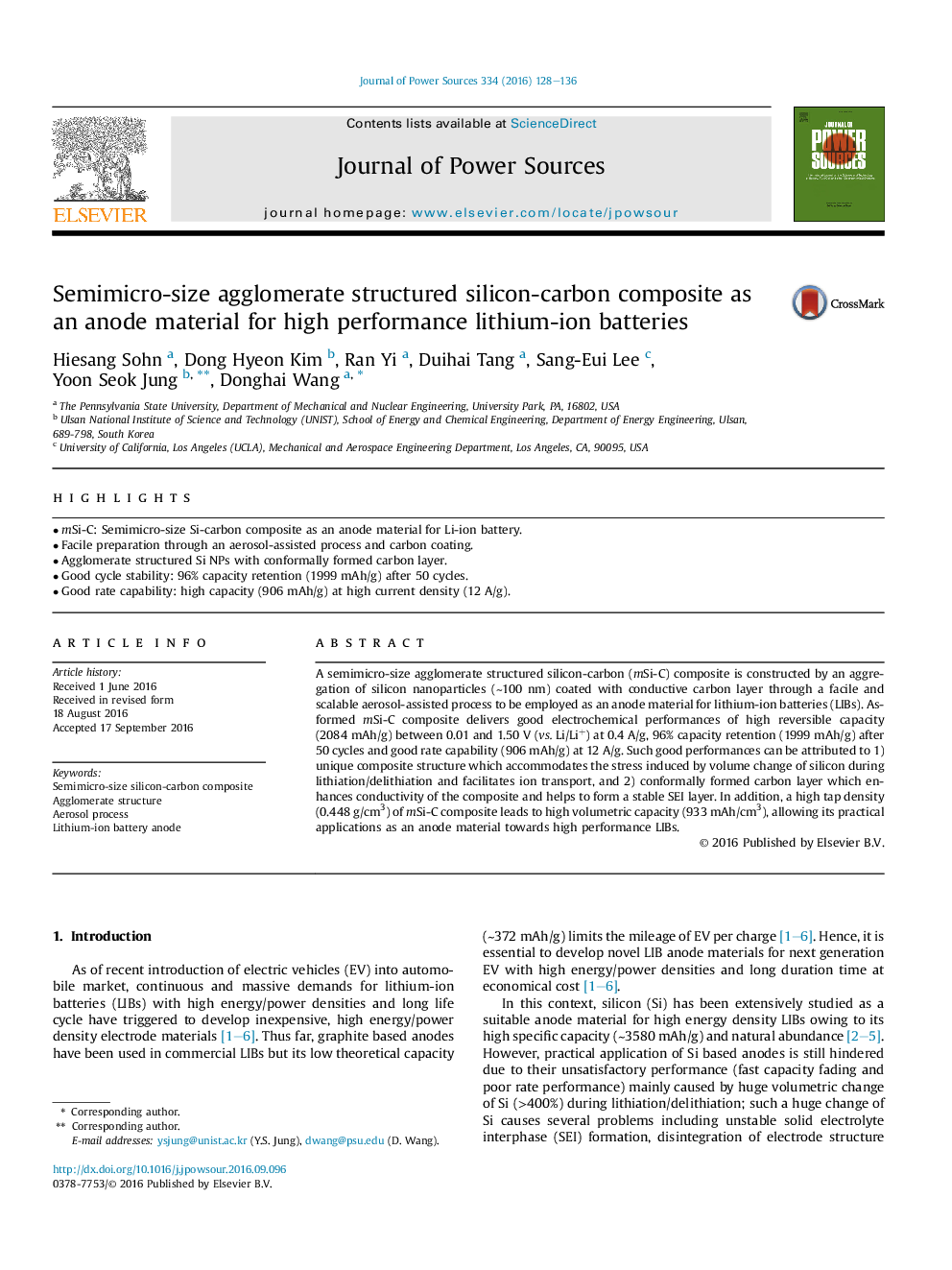| Article ID | Journal | Published Year | Pages | File Type |
|---|---|---|---|---|
| 5150030 | Journal of Power Sources | 2016 | 9 Pages |
Abstract
A semimicro-size agglomerate structured silicon-carbon (mSi-C) composite is constructed by an aggregation of silicon nanoparticles (â¼100Â nm) coated with conductive carbon layer through a facile and scalable aerosol-assisted process to be employed as an anode material for lithium-ion batteries (LIBs). As-formed mSi-C composite delivers good electrochemical performances of high reversible capacity (2084Â mAh/g) between 0.01 and 1.50Â V (vs. Li/Li+) at 0.4 A/g, 96% capacity retention (1999Â mAh/g) after 50 cycles and good rate capability (906Â mAh/g) at 12Â A/g. Such good performances can be attributed to 1) unique composite structure which accommodates the stress induced by volume change of silicon during lithiation/delithiation and facilitates ion transport, and 2) conformally formed carbon layer which enhances conductivity of the composite and helps to form a stable SEI layer. In addition, a high tap density (0.448Â g/cm3) of mSi-C composite leads to high volumetric capacity (933Â mAh/cm3), allowing its practical applications as an anode material towards high performance LIBs.
Related Topics
Physical Sciences and Engineering
Chemistry
Electrochemistry
Authors
Hiesang Sohn, Dong Hyeon Kim, Ran Yi, Duihai Tang, Sang-Eui Lee, Yoon Seok Jung, Donghai Wang,
